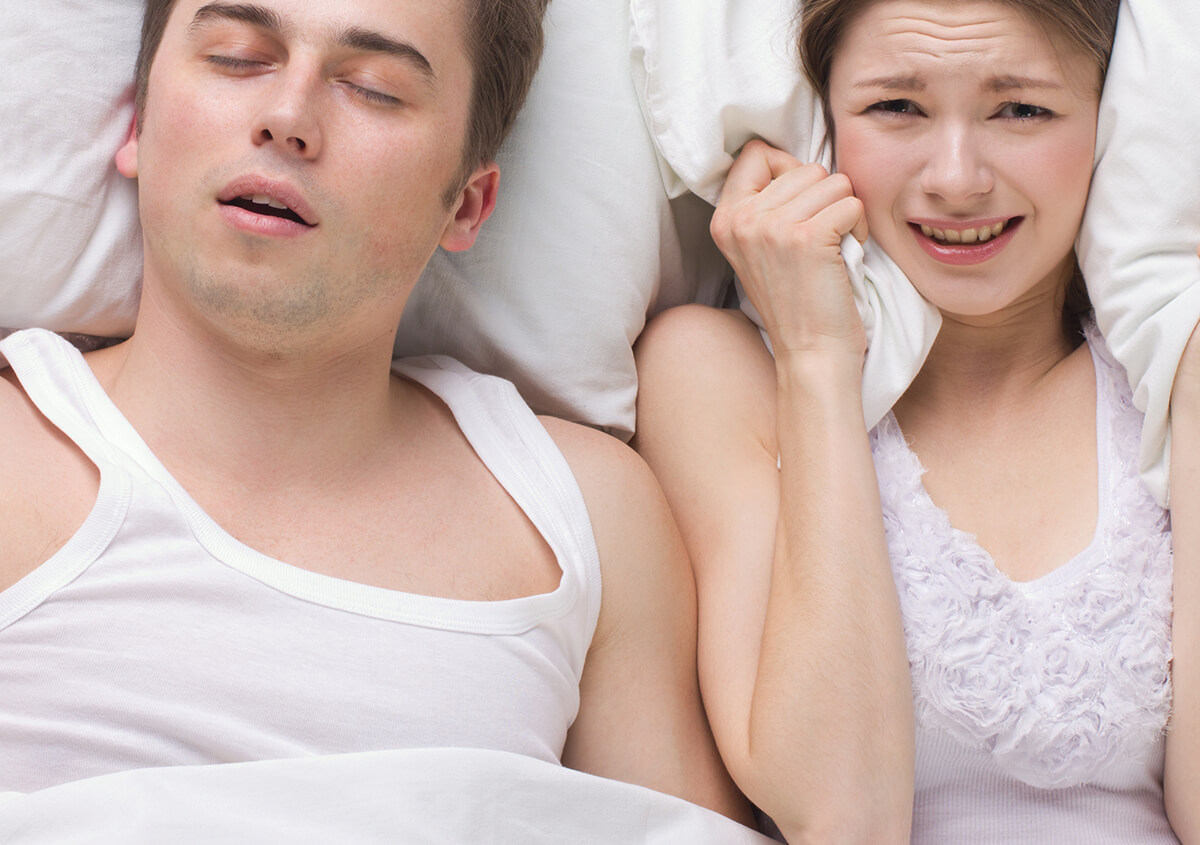Understanding sleep apnea and snoring, a guide to comfortable, convenient treatment options
Led by Dr. Giulio Spagnuolo, the team at We Smile Dentistry may recommend custom-fitted devices (oral appliances) to improve or eliminate a range of oral conditions and their consequences — from dental damage caused by chronic teeth grinding to migraines and other temporomandibular joint (TMJ) symptoms. Oral appliances that slide into the mouth and reposition the jaw and tissues can also have a transformative effect on the lives of patients throughout London, Ontario and the surrounding area who suffer from disruptive snoring or a dangerous form of sleep-disordered breathing: sleep apnea.
Sleep apnea, treatment options explained

The term apnea is derived from the ancient Greek word apnoeia, which refers to the absence of breath. And this is precisely what occurs when people with apnea are relaxed – they stop breathing while asleep! Apnea is defined mainly by periods of interrupted breathing, but the condition’s root cause varies depending on the type of sleep apnea present. Our team’s understanding of the nature and severity of your condition informs the therapies that are recommended to you. Patients may be diagnosed with:
- Obstructive Sleep Apnea (OSA), the most common type
- Central Sleep Apnea (CSA)
- Mixed (or complex) Sleep Apnea, a combination of OSA and CSA
OSA is rooted in the lax muscles at the back of the throat. These tissues may become so relaxed during sleep that they block or narrow the airway. Air can’t pass through easily. The process of breathlessness followed by an abrupt reawakening can be repeated 30 or more times each hour throughout the night.
CSA is less commonly known and arises when your brain does not correctly “signal” to the muscles responsible for breathing. Patients diagnosed with CSA may be more likely than those with OSA to remember waking up and have greater difficulty resuming sleep.
Mixed or complex sleep apnea can be characterized by the blockage of the airway associated with OSA and a failure for the brain to properly signal to the muscles that “tell” your lungs to breathe. In these cases, even with the airway reopened, patients may still fail to resume breathing properly.
Consequences that demand attention
As you might imagine, any time breathing ceases, there is the potential for severe — even deadly — conditions to arise. Patients with sleep apnea predominantly suffer from:
- Habitual and often very loud snoring, which can interrupt partners’ sleep, too, and negatively affect relationships
- Lingering drowsiness and fatigue that increases your risks of vehicle and work accidents and interferes with work and school performance
- A chronic lack of restful sleep and impaired breathing that stresses the body’s organs and puts sufferers at greater risk of developing conditions, ranging from Type 2 diabetes to hypertension and heart disease
Individuals who suspect they suffer from sleep apnea must seek assistance promptly. There are myriad treatment options to resolve troubling symptoms and prevent dangerous complications. The “gold standard” treatment is CPAP therapy; a unique machine delivers “continuous positive airway pressure” to the patient through a hose and mask placed over the patient’s mouth. While this presents a tried-and-true way to manage sleep apnea, CPAP has a low level of compliance. It takes a lot of trial and error to adjust to the noise produced by the machine and to the sensation of wearing a mask through the night. Some people just never get used to it!
Discreet oral appliances to the rescue
Patients who are “primary” snorers (their snoring is not secondary to sleep apnea) or who have a less severe case of apnea may benefit from snoreguards, mandibular advancement devices, or tongue stabilizing devices. These appliances are generally designed to reposition the tissues that block the airway. The design may involve moving the jaw forward and depressing the tongue, which allows the patient to breathe through the night without the tongue or throat tissues getting in the way. It is the vibration of the air against the tissues that produce characteristic “snoring” sounds and can interfere with healthy, consistent breathing.
Dr. Spagnuolo may suggest a snoreguard without a prescription or prescribe a customized device following a sleep study to confirm your diagnosis. These devices may eliminate the need for CPAP therapy or reduce the severity of sleep apnea. Devices may also be used in conjunction with CPAP and lifestyle modifications, as being overweight and smoking are among the risk factors associated with snoring and OSA.
Regain your restful sleep and health! Call (226) 605-0042 to schedule your appointment at We Smile Dentistry in London.






